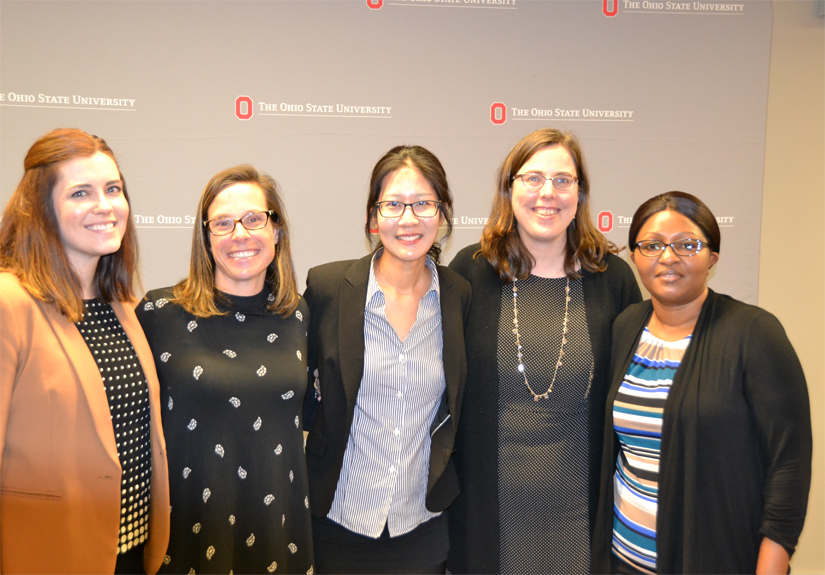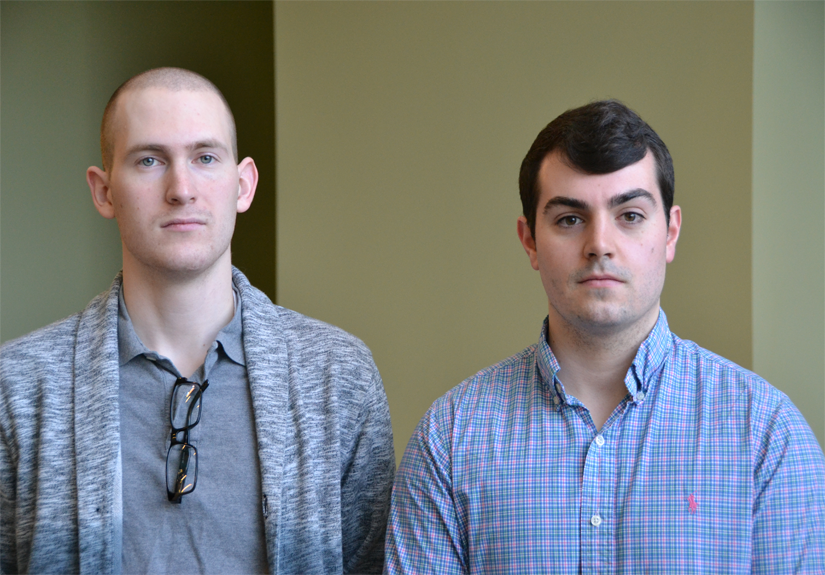Crisis Intervention, Campus Innovation
Ohio State's Opioid Innovation Fund inspires multidisciplinary partnerships to address the opioid epidemic
By Steve Barrish & Chris Booker

The hill is steep in the battle against opioids. Drug overdose deaths in the U.S. climbed 21 percent in 2016 from the year before, according to the Centers for Disease Control and Prevention, and nearly two-thirds of those deaths involved prescription or illicit opioids.
Turning the tide of this growing crisis isn't the work of one entity or field of practice, a point emphasized by the Opioid Innovation Fund: a $1.35 million commitment announced last year by Executive Vice President and Provost Bruce McPheron, PhD, to fuel interdisciplinary research and collaboration in solving the epidemic.
“This is an opportunity to further build capacity on campus around the opioid crisis," says CPH Dean William Martin II, MD, who was selected by the university to co-chair a steering committee responsible for allocating the funds.
In October 2017, Martin and his co-chair Roger Rennekamp, PhD, director of Ohio State Extension, collected pre-proposals from nearly 100 applicants representing disciplines university-wide. A third advanced to the next round in the selection process.
“The full proposals, as well as the preproposals, really reflected the breadth of the university,” Martin says. “They were all well done; very competitive. It was a challenging process to even cull the herd down to 33.”

After the final selection, eight teams were awarded grants ranging from $100,000 to $45,000. The projects include a $96,762 implementation grant to develop the Franklin County Opioid Crisis Activities Levels Map, a system to track and map, on a daily basis, data on opiate overdoses from the 22 emergency medical services organizations in Franklin County. The data will be used to help connect communities in greatest need to resources to combat overdoses.
“It will be more than just a dashboard. It will be a way to address research questions and policy questions, and provide data in a way that Columbus Public Health or other community organizations can use right away to make better decisions, to make faster decisions and to save more lives,” says Ayaz Hyder, assistant professor of environmental health sciences at CPH and one of the researchers for the FOCAL map project.
“The long game here is to look for scalable solutions that are evidence based. I have no problems having that be the final filter." -- William Martin II, MD
Another grant of $45,541 will fund development of a community and social network-based campaign to reduce opioid-related stigma and overdose. The campaign will educate people who use drugs, their friends and family, and the broader community about the opioid overdose-reversal medication naloxone, and how to recognize and respond to an overdose.
Martin was joined by Francis Collins, MD, PhD, director of the National Institutes of Health (NIH), in the announcement of the awards in March. Collins also participated in a roundtable discussion with researchers and other community experts to discuss solutions to the opioid epidemic.
“I'm very impressed and gratified to see the kind of creativity and energy and resources that are being put into this," Collins says. "And we at NIH aim to try to be the best possible partner we can offer those efforts.”

Collins says an apparent federal budget agreement will likely mean more funding for addiction research and treatment. He says universities like Ohio State will be critical to helping communities solve the addiction crisis.
“There is $500 million for this current fiscal year on top of what we've already been doing. That is specifically targeted to increase our ability to do research in this space,” Collins says. “And we at NIH are prepared to figure out ways to inspire all of those investigators all over the country to come forward with their best ideas about how this could be most appropriately allocated to make progress in this space.”
Martin says the awards were just the start of a university effort to reduce the burden of the opioid crisis.
“This obviously is a moment for us not only to celebrate the awards, but also to underscore the breadth of the opportunities and the breadth of a land-grant university to solve the problems in our communities,” he says. “This is not going to be done in isolation. It is done together with the communities that we serve.”
Originally published in the spring/summer 2018 issue of Ohio State Public Health Magazine.
About The Ohio State University College of Public Health
The Ohio State University College of Public Health is a leader in educating students, creating new knowledge through research, and improving the livelihoods and well-being of people in Ohio and beyond. The College's divisions include biostatistics, environmental health sciences, epidemiology, health behavior and health promotion, and health services management and policy. It is ranked 22nd among all colleges and programs of public health in the nation, and first in Ohio, by U.S. News and World Report. Its specialty programs are also considered among the best in the country. The MHA program is ranked 5th and the health policy and management specialty is ranked 21st.